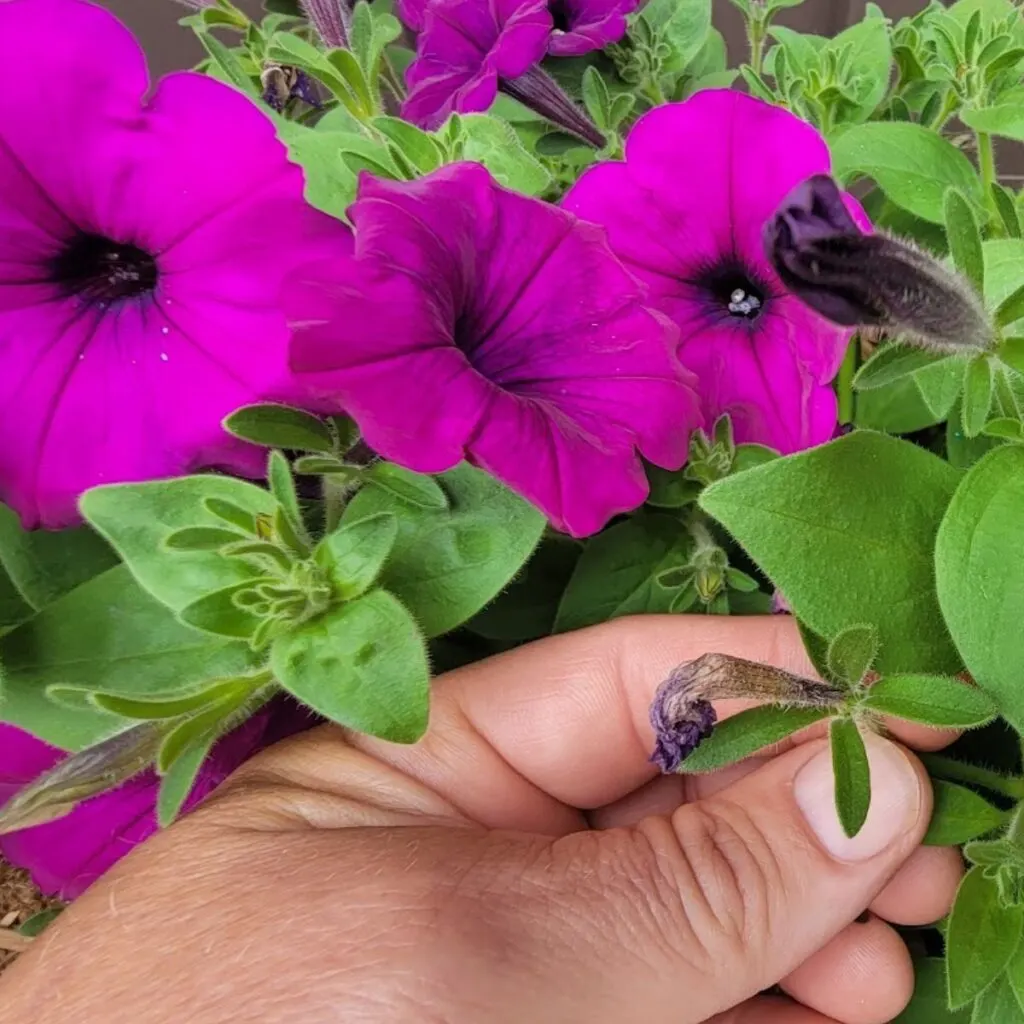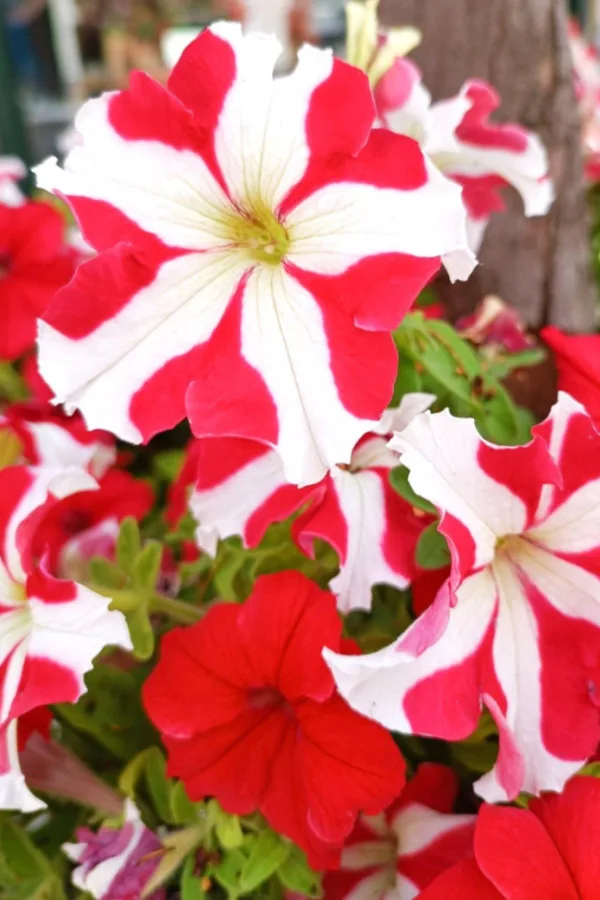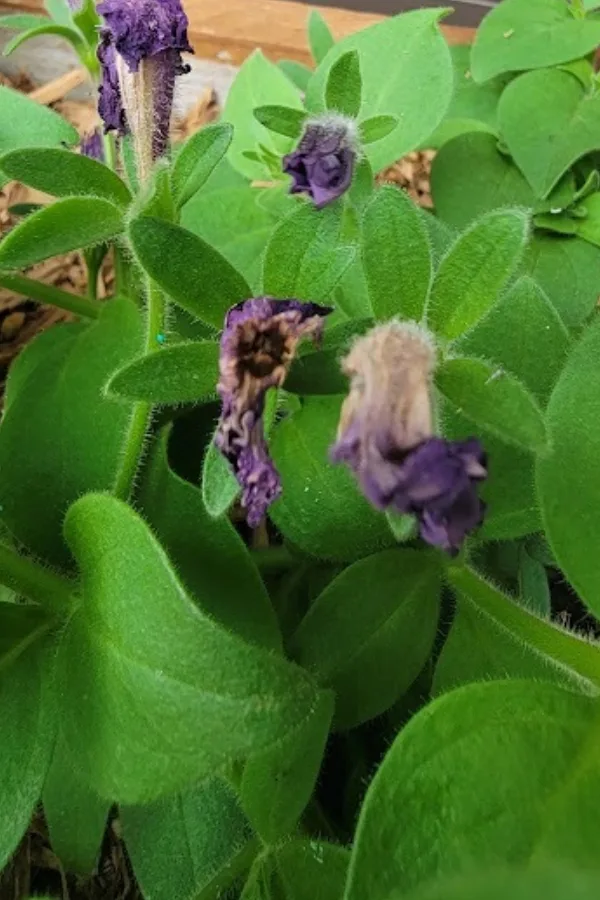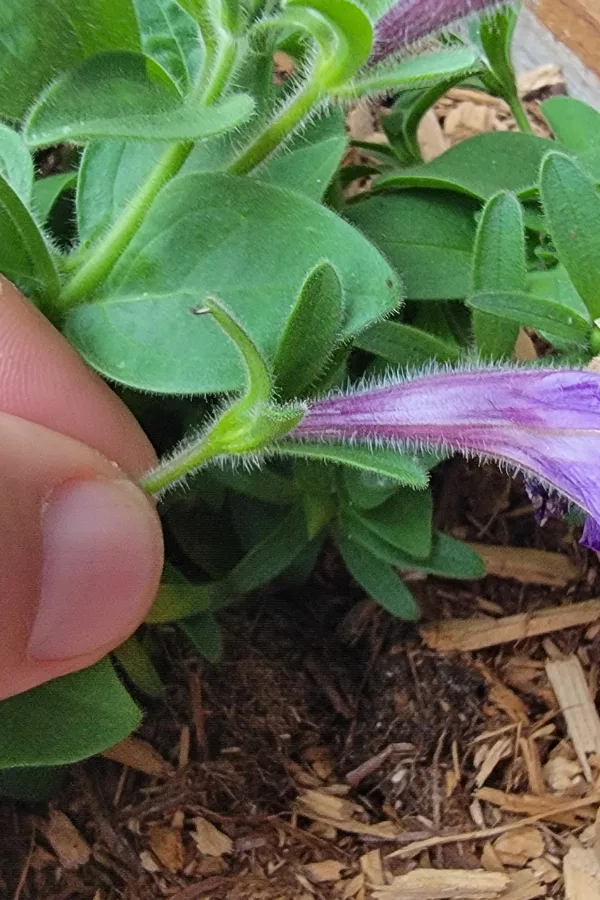One of the easiest and best ways to keep your petunias healthy, bright and blooming bigger than ever is to deadhead them on a regular basis. But, as you will see below, the real secret to success is knowing just where and when to pinch them back for maximum flower power!
Petunias are one of the most popular of all flowering annuals. Available in a near endless selection of vibrant hues and blooming styles, they are a great choice for growing in any area that receives more sun than shade.
Not only do petunias perform well in flowerbeds, they are perfect for filling pots and hanging baskets with a flush of color as well. But for many gardeners, the one drawback with growing petunias is trying to keep them blooming strong all throughout the season.

The Blooming Cycle Of Petunias – How To Deadhead Petunias
In the spring, petunia plants are full of energy and life, and, of course, covered in a massive amount of blooms. In fact, early season petunias often bloom so heavily that it can sometimes be difficult to see their foliage.
But after the first few rounds of blooming strong, things can change quickly. By early summer, petunias can often begin to slow down their flowering cycles. So much so that by mid to late summer, many petunia plants are barely blooming at all.
Is it a lack of fertilizer? Not enough sun or water? Although all three of those factors can play a role in petunias failing to bloom strong, more often than not, it is a lack of regular deadheading that keeps plants from continuing to flower with gusto.
Deadheading is the act of removing the fading flowers, seed heads and stems from a plant. And for annuals such as petunias, geraniums, marigolds and more – it plays a major role in helping the plants to continue to produce new blooms over and over again.

How Deadheading Helps Plants Bloom More – How To Deadhead Petunias
Petunias use a tremendous amount of energy to grow and produce their flowers. So much so that they can deplete the soil of nutrients in short order. This can be especially true for petunias growing in containers and hanging baskets.
Although providing the plant with fertilizer can help restore nutrient levels in the soil, it is equally important to keep your plants from wasting energy. And do they ever waste energy on their old blooms!
A petunia plant sends out energy to grow a stem and produce a bloom. Once the bloom is formed, it then sends even more power to help open the bloom into a beautiful flower. And once a bloom opens, it will continue to send energy to that same bloom to help it stay strong and bright.
The Energy Loss Continues – How To Deadhead Petunias
Unfortunately, once the bloom reaches its peak and begins to fade, the energy loss doesn’t stop. As a bloom begins to die, the plant will release even more energy to that very same bloom in an attempt to heal it. And even as the bloom finally dies, the plant burns yet more nutrients to create a seed head on the bloom stem.

As you can see, stopping that energy loss can help conserve a lot of power for your plant. Power that can be used instead to set and from new blooms. And that is exactly where deadheading your plant regularly comes into play!
The minute a fading bloom and seed head are removed from a plant, the energy loss stops. And once the plant can stop trying to fix old blooms and form seed heads, its attention will go right back to powering more and more blooms. But the ultimate key to success lies in deadheading your petunia where it helps most!
How To Deadhead Petunias – Where & How To Pinch Off Old Blooms
One of the biggest mistakes gardeners make when deadheading petunias is to only pull the flower off. Petunias blooms are extremely delicate. Because of this, they pull of easily from the stem, especially when dying off.
But unfortunately, behind the flower and still on the stem is a little tiny bulbous seed head. And as long as that seed head remains, the plant will send energy to it. And a lot of it!
Forming seeds is a big task for plants. And it uses up a tremendous amount of nutrients and energy. When deadheading, always be sure to pinch off behind the seed head to the next set of flowers.

By removing the flower, seed head and even a small portion of stem back to a fresh set of leaves, you effectively stop all nutrients being spent on the old bloom. Even better, pinching back also keeps your petunias from becoming overly leggy and spindly.
Pruning Back Petunias – How To Deadhead Petunias For More Blooms
Even with pinching back blooms to the next set of flowers, by mid to late summer, petunias can still begin to become wiry, weak and leggy. When this occurs, it’s time to prune your petunia back into shape!
Although it may remove a few flowers and blooms, cutting back plants in mid summer can really help to rejuvenate their overall growth and blooming potential. The good news is that it doesn’t take long for petunias to recover and bloom after light pruning.
The best way to prune petunias is with a sharp pair of hedge shears. Simply shear off the plant back to the main canopy of foliage. Remove all of the long, spindly stems and shape the plant back to six to eight inches in height.
After shearing back, apply a good fertilizer (see below for more on this) to help jump start growth. The extra power will have it growing new foliage and setting new blooms fast!
More Ways To Help Petunias Bloom – How To Deadhead Petunias
In addition to regular deadheading and pruning back overgrown plants, proper watering and fertilizing is a must to keep your plants blooming strong.
For More Info On Deadheading – Listen In Below To Our Podcast!
When it comes to fertilizing petunias, consistency is the name of the game. Giving your plants regular doses of power every ten to fourteen days will work wonders. Not only for helping them stay in bloom, but also to keep their foliage strong as well.
But what you feed them is very important too! Liquid fertilizers work best with petunias. They absorb both through the roots and leaves of plants, doubling the energy they can absorb. Look for a liquid fertilizer that has more phosphorous and potassium than nitrogen. Affiliate Product Link: Jack’s Classic Blossom Booster 1.5 lbs, 10-30-20
Nitrogen is good for powering leaves and stem growth, but phosphorous and potassium are best for bloom production, flowering and overall plant health. For more on powering your petunias, be sure to check out our article : How To Fertilize Petunias For Success!
Here is to keeping your petunias blooming big this year by deadheading them weekly!
Follow Our Facebook Page For Great Gardening Tips And Advice! This Is My Garden Facebook Page
This Is My Garden is a garden website created by gardeners, for gardeners. Jim and Mary Competti have been writing gardening, DIY and recipe articles and books and speaking for over 15 years from their 46 acre Ohio farm. They publish three articles every week, 52 weeks a year. Sign up today to follow via email, or follow along!
